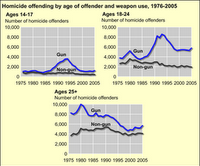 i did an interview today with wcco’s jason derusha (at left). i like his regular good question reports, in which local experts answer everything from how do i know my bank is safe? to why does music bring us back?
i did an interview today with wcco’s jason derusha (at left). i like his regular good question reports, in which local experts answer everything from how do i know my bank is safe? to why does music bring us back?
our conversation about international crime rates should air at 10 tonight. i would’ve referred this one to colleagues who do more comparative research, but it can be tough to catch folks during the summer. i’m expecting some snarky comments on my jeans and cleanest-dirty-shirt wardrobe. for years, i kept an emergency blue suit in my office for just such occasions, but retired it last month in a fit of housekeeping.






 saturday’s
saturday’s